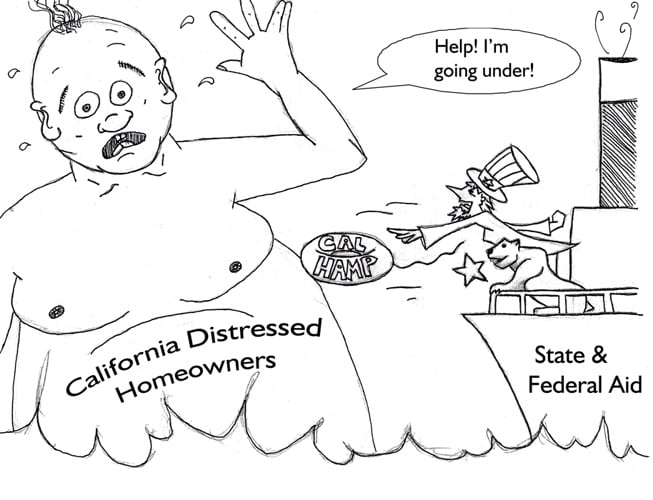But will it work?
While it’s commonly held that you shouldn’t look a gift horse in the mouth, some perspective on the size of the supposedly charitable Cal-HAMP is necessary.
$700 million may seem like a lot of money on personal terms, but taken in context of California’s underwater epidemic, it is a politically gratuitous pittance. When compared to California’s 2,500,000 underwater owners stuck in financially precarious assets – their homes – the number of individuals helped by the Cal-HAMP (around 38,100 based on Cal-HFA’s projections) is de minimis.
The diminutive $700 million won’t come close to saving all of California’s underwater homeowners, most of whom are not even eligible for this Cal-HAMP program, such as those who cashed-out the equity in their homes during the super-heated years of the Boom when homes were considered to be spandex piggybanks. Even after a greater-than-125% negative equity homeowner receives the absolute maximum of $50,000 over three years, he will still not have an equity stake in his property. Thus, he is implicitly an economic tenant in a house he legally owns.
As has been first tuesday’s perpetual battle cry, desperately underwater homeowners (with an LTV greater than 125%) would be better off strategically walking away from their black-hole assets than holding their breath and hoping another more charitable program will provide them with solvency – this plan is not designed to and it certainly won’t.
Bankruptcy judges have the other rational cramdown answer which they had until 2005, but Congress’s “no on most things” ethos won’t let them get it back. [For more information analyzing the authority of bankruptcy judges to restore solvency to California’s distressed homeowners through a cramdown, see the February 2010 first tuesday article, H.R. 4173 and the failed homeownership cramdown amendment.]
Additionally, the optional voluntary participation caveat for lenders damns this program to the same irrelevancy as its national big brother, HAMP. [For more information concerning the toothless HAMP program, see the April 2010 first tuesday article, New HAMP revisions: mortgage-relief plan version 2.0.]
$700 million will seem like a God-send to a very few low-tier property owners who bought during the 2003-2007 binge, but perceptive brokers, agents and homeowners will not be fooled. California doesn’t need yet another variation on a charade designed to appease the populace.
However, despite this pessimistic verdict, innovative agents and brokers should still educate themselves on the multiple financial assistance programs that will soon be available under Cal-HAMP (and hopefully legislation will not bar them from helping this time).
While it clearly won’t rescue all of California, it may help some low- tier property homeowners who are severely underwater but are none the less adamant about staying in their homes. These individuals, though proportionally very few, will absolutely require help navigating the intricacies of the programs once the Cal-HAMP program is approved by the Treasury and available to the public.


















